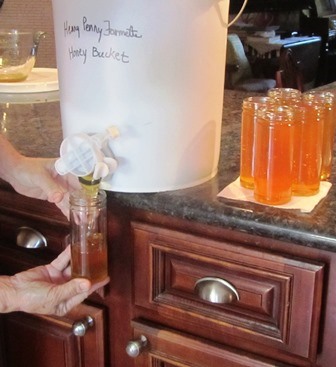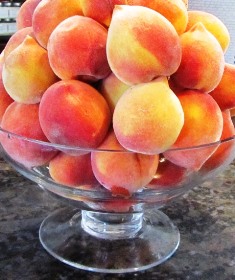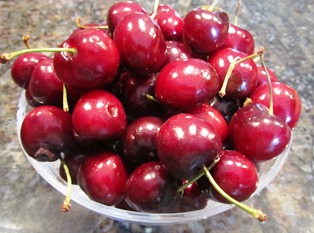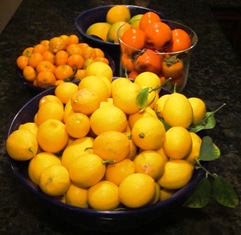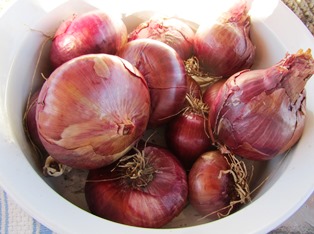Gifts from the Hive
Mention beekeeping, and most folks think right away of the delicious honey that bees make. Of course, farmers and gardeners love bees because the insects pollinate the plants growing in the vicinity of their hives.
After collecting pollen, the bees make honey–nature’s sweetener. Honey adds an interesting flavor to savory dishes and is a valued ingredient in desserts. Raw honey also has medicinal value since it has a slightly acidic pH and can cause a complex reaction when used to disinfect scrapes and wounds. But honey has other uses as well.
Because honey contains lower levels of fructose (unlike refined sugars), it is less inflammatory to the stomach and digestive organs. Today, honey is widely considered a superfood, one to be consumed to maintain good health. Honey is a great ingredient for cough drops and sore throat soothers. Or, drop a spoonful into your favorite tea for a cupful of enjoyment at any time.
Comprised of tiny particles of powdery pollen gathered from flowers, bee pollen is loaded with vitamins and minerals. It also contains amino acids, enzymes, and proteins. It can be eaten in foods or on cereal as well as used as an ingredient in soap.
Beeswax makes lovely candles and soaps. Honey is often used as a vital ingredient in homemade cosmetics, bath oils, and hand cream. Of course, all these gifts from the hive are as appreciated by those who don’t keep bees as well as those who do. And since the season of gift-giving is upon us, consider buying from local beekeepers their artisanal honey and other products from the hive.
Buying Fair Trade Generates More than Good Taste
We all love our local farmers’ markets where the freshest organic ingredients–direct from the farm to our tables–are easy to find and purchase. And they taste so good. But sometimes, we consumers desire something grown beyond America’s borders, such as tea, coffee, exotic spices, and chocolate. And this is where choice and purchasing power has consequences.
When you choose to buy products displaying a FAIR TRADE certification logo, your action directly and positively impacts the lives of farmers, growers, artisan craftspeople, commodities producers, and their workers in communities in developing nations.
As consumers demand better products and better working conditions for workers, the Fair Trade movement has more clout to lobby on behalf of commodity farmers, impoverished workers, and child laborers.
If you love chocolate, consider this: seventy percent of the world’s cocoa beans is produced in Cote d’Ivoire and other Western African countries. Pay is nominal at $2 USD/per dieum and, according to UNICEF, more than a half million children labor under dire working conditions in the cocoa fields in these bean-producing countries even though child labor is illegal in the cocoa industry.
Coffee was one of the first Fair Trade certified products but today’s consumers can now also find Fair Trade certified cocoa, wine, cotton, fruit, tea, red palm oil, coconut oil and associated products, chocolate, honey, quinoa and other ancient grains, beans, sugar, and bananas, to name a few items.
The Fair Trade Movement has been around since mid last century. It began as a mainly North American/European social movement to aid poor farmers, commodity producers, and laborers in developing nations to achieve more favorable trading conditions. Fair Trade also promotes sustainability.
Choosing to buy a product carrying the Fair Trade certification label means your consumer decision will impact more than your taste buds–it will have positive ramifications for workers, commodity producers, and their communities beyond America’s borders.
California’s Agricultural Wealth on Display in Its Farmers’ Markets
California is especially blessed with rich soil and that lovely Mediterranean climate with the near-perfect amount of heat and chilling that our agricultural products require.
You might not know that Northern California leads the nation in production of nearly three dozen different commodities, including artichokes, strawberries, peaches, and walnuts. Many products can be found at local farmers’ markets. See http://www.pcfma.com/
Our state offers more than 350 farmers’ markets and many are year-round. With growing interest in healthy eating as advocated by First Lady Michelle Obama, whose position about the importance of healthier food for kids and their families has been highly publicized, community participation in local farmers’ markets is growing.
Buy fresh and buy local. I love that adage because in practice your dollars spent at farmers’ markets or in direct purchases from farms preserves our farmlands, local growers, and small businesses selling locally grown fruits, vegetables, berries, nuts, and citrus.
The Pacific Coast Farmers’ Market Association has produced a comprehensive listing of agricultural products available in our area for each month of the year. I’ve recapped the list of vegetables here. The fruit and berries will be the subject of a future blog.
Asian Vegetables: January-December
Asparagus: March-June
Beans: January-December
Broccoli: January-December
Brussels sprouts: January-March; September-December
Carrots: January-December
Cauliflower: January-June; October-December
Celery: January-December
Corn: July-September
Cucumber: May-November
Eggplant: May-October
Garlic: January-December
Lettuce: January-December
Mushrooms: January-December
Onions: January-December
Parsnips: January-May; October-December
Peas: April-October
Peppers: May-November
Potatoes: January-December
Spinach: January-December
Squash (summer): May-September
Squash (winter): January-February; October-December
Sweet Potatoes: January; September-December
Tomatoes: May-October
Help preserve California’s rich heritage of plant diversity. Support your local farmers’ market by buying fresh, often just-picked vegetables and fruits, the result of our long growing season and rich soil. You’ll be supporting our state’s farmers and growers.
 Facebook
Facebook Goodreads
Goodreads LinkedIn
LinkedIn Meera Lester
Meera Lester Twitter
Twitter




